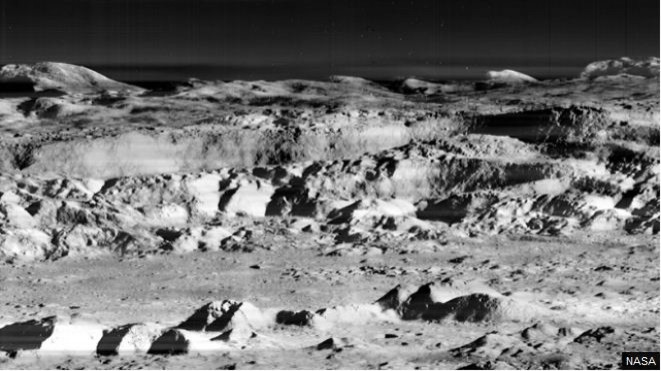Pile of Lunar Rubble Found on Moon, Is It the Lost 1967 Spacecraft?

NASA scientists believe that they might have found a lost 1967 Lunar Orbiter 2 spacecraft that took "the picture of the century" before crashing on the moon.
The spacecraft was sent to the moon to stake out landing sites for the Apollo missions. Although, its efforts weren't successful, the spacecraft made its mark in history by taking the first image of the moon, regarded as "the picture of the century", before crashing on moon.
The NASA satellite was crashed on the far side of the moon, which was out of the sight of telescopes and radios, meaning that the space agency has no idea what happened to the craft and where exactly it crashed, Fox News reported.
New information collected by the Lunar Reconnaissance Orbiter sheds (LRO) light on the decades-old loose end. LRO is an image spacecraft that is similar to the Lunar Orbiter with a similar mission. It was sent to orbit the moon to map out its entire lunar surface in detail.
A new image taken by LRO shows details of a strange, butterfly-shaped pattern on the lunar surface indicating a mysterious pile of lunar rubble. However, scientists who are studying the image are not sure whether the rubble is a comet impact or the crash landing of a space probe?
The image is not clear enough to identify the diameter of the crater rim, but scientists are "currently re-targeting the area" to determine more accurate measurements, the Daily Beast reported.
"The impact appears much too large (~85 m in diameter) to be the result of an impact from a spacecraft only a few meters tall, but with a solar incidence angle of only 12 degrees, it is difficult to see the crater rim and find out the true diameter," James Ashley posted on an Arizona State University website that studies images from LRO.
"The truth is that we are not sure what caused this impact feature," Ashley added. "We are currently re-targeting the area under a higher incidence angle to help with crater rim measurements. Stay tuned!"
© Copyright IBTimes 2024. All rights reserved.





















